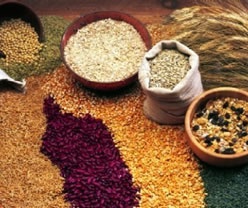- Home - News
- TWI News | TV
- Polls
- Year In Review
- News Archive
- Crime & Punishment
- Politics
- Regional
- Editorial
- Health
- Ghanaians Abroad
- Tabloid
- Africa
- Religion
- Election 2020
- Coronavirus
- News Videos | TV
- Photo Archives
- News Headlines
- Press Release
Press Releases of Monday, 16 July 2012
Source: Center for Policy Analysis
Robust first quarter performance keeps economy on growth target

A. Introduction:
The Ghana Statistical Service (GSS) currently provides three interrelated measures of real GDP. For any specified period of time typically a quarter or calendar year real GDP is the constant price (2006) value of relevant economic activities in that specified period. Constant prices are used in the valuation in order to eliminate the effect of inflation which otherwise could confuse the assessment of economic performance. The growth rate is obtained by comparing the value of the current period with that of a previous period. The three measures of data are the following:
- year-on-year for each of the four quarters of the calendar year, defined by GSS as comparing current economic developments with that of the same period in the previous year. There is little or no influence by seasonal factors;
- quarter-on-quarter for each of the four quarters in comparison with the preceding quarter defined by GSS as providing a short-term (six months) picture of current economic developments. The estimates are influenced by seasonal factors that are caused by economic behaviour or recurrent exogenous factors such as weather patterns, holidays, religious events etc ; and
- the current calendar year compared to the previous calendar year the more common measure used in public discussions, as for example: the economy grew at 14.1 percent in 2011.
Moreover, all of the above measures of economic performance are subject to periodic revisions. According to the GSS, revisions provide the opportunity for incorporation of additional and improved data. For example, some data that were not available at the released date are incorporated through revisions into subsequent releases.
The three measures produce growth rates that are also interrelated, with each of them having implications for the other two. Figuring out these implications raises some technical computational problems. The GSS does not always appear to reconcile the data. On the matter of reconciliation of quarterly and annual measures, the GSS notes in its Revision Policy: The process of reconciling the quarterly measures to the annual measures can lead to further revisions. The quarterly measures of these series are based on a smaller range of data than the annual measures.
The fact remains that the GSS has had to withdraw and replace a release in the course of last year 2011. All of these reasons for revision and the revisions themselves add to the complications of proper assessment and interpretation of the statistics of economic performance.
B. Overall Performance
For the four quarters that constitute the calendar year, namely the first, second, third and fourth quarters of 2011, the real GDP growth rate is estimated at 14.1 percent. This comprises a trend growth rate of 8.2 percent of the non-oil sector together with a contribution equivalent to 5.9 percent of non-oil GDP from the oil (both Jubilee and Saltpond) sector. By way of comparison, CEPA estimates, on the basis of the data released by the GSS, that for the 12 month period ending first quarter of 2012 namely the second, third and fourth quarters of 2011 plus the first quarter of 2012 the overall growth rate (also called the seasonally adjusted annual growth rate) accelerated to an annual rate of 15.5 percent.
The acceleration in the seasonally adjusted growth rate for the first quarter of 2012 is explained by the fact that the year-on-year growth rate of 8.7 percent recorded for that quarter is a marked improvement two and half times over the 3.3 percent recorded for the first quarter of the preceding year 2011. In other words, the expected deceleration points to the fact that the sterling performances of the second, third and fourth quarters of the first year in the oil era are unlikely to be matched in the second year.
For calendar year 2012, the projected or target growth of 9.1 percent comprises a trend growth of the non-oil sector conservatively estimated at 8.2 percent and the contribution of the oil sector equivalent to 0.9 percent of non-oil GDP. An implication of the projection of 9.1 percent for calendar year 2012 is that the so-called seasonally adjusted annual growth rates for the succeeding second, third and fourth quarters will decelerate successively to the final target.Click For Full Report










